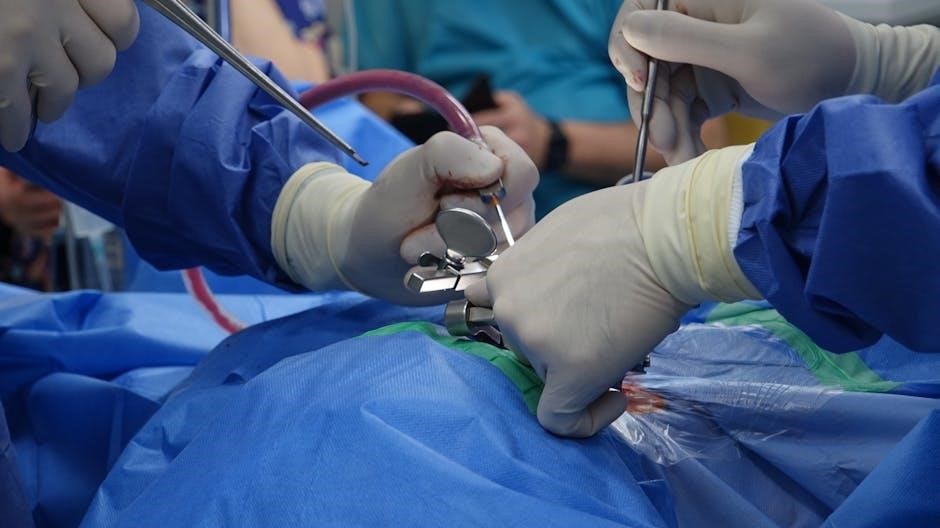Meniscus injury exercises are crucial for recovery, and a well-structured program is essential, using tags like h2 and p for organization and clarity, ensuring a safe and effective rehabilitation process always starts with a proper introduction.
Understanding Meniscus Tears
Meniscus tears are a common knee joint injury that can cause pain and discomfort. The meniscus is a piece of cartilage in the knee joint that cushions and stabilizes the joint, and tears can occur due to various reasons such as injury, wear and tear, or sudden twisting motion.
There are different types of meniscus tears, including bucket handle tears, flap tears, and radial tears, each with its own set of characteristics and treatment options. The severity of the tear can also vary, ranging from minor to severe, and can affect the treatment plan.
A thorough understanding of meniscus tears is essential for developing an effective treatment plan, which may include exercises, physical therapy, or surgery. The Internet provides a wealth of information on meniscus tears, including symptoms, causes, and treatment options, which can be useful for individuals looking to learn more about the condition.
By understanding the anatomy of the knee joint and the different types of meniscus tears, individuals can better appreciate the importance of seeking medical attention if they experience any symptoms of a meniscus tear, such as pain, swelling, or difficulty moving the knee.
Overall, understanding meniscus tears is crucial for promoting effective treatment and prevention of further injury, and can help individuals regain strength and mobility in their knee joint. The information available on the Internet can serve as a useful resource for individuals looking to learn more about meniscus tears and develop a comprehensive understanding of the condition.

Rehabilitation Program
A rehabilitation program typically includes exercises and physical therapy to promote healing and recovery, using a structured approach with tags like h2 and p for organization and clarity always.
Phase I Exercises
Phase I exercises are designed to improve range of motion and reduce pain and inflammation, typically lasting several weeks.
These exercises are gentle and low-impact, aiming to promote healing and prevent further injury.
A physical therapist or healthcare provider will often guide patients through these exercises, ensuring proper technique and progression.
The goal of Phase I exercises is to lay the foundation for more advanced exercises in later phases, focusing on strengthening the surrounding muscles and improving joint mobility.
Exercises may include straight leg raises, knee bends, and straight leg lifts, all of which can be modified to suit individual needs and abilities.
It is essential to follow a structured program and avoid overexertion, as this can exacerbate the injury and prolong recovery.
By progressing through Phase I exercises, patients can expect to see improvements in knee function and a reduction in symptoms, setting the stage for more challenging exercises in Phase II.
A well-designed exercise program, using tags like h3 and p for organization, is crucial for a successful rehabilitation outcome, and patients should work closely with their healthcare provider to ensure a safe and effective recovery.
Regular monitoring and adjustments to the exercise program are necessary to ensure optimal progress and minimize the risk of complications.

Progressing to Phase II Exercises
Progressing to Phase II involves increasing exercise intensity, using tags like h2 and p, with a focus on strengthening and advanced mobility techniques always.
Advanced Exercises
Advanced exercises are designed to challenge the knee joint and surrounding muscles, promoting further strengthening and stability. These exercises typically involve more complex movements and may include activities such as agility drills, balance training, and plyometric exercises. The goal of advanced exercises is to restore full function and mobility to the knee, allowing individuals to return to their normal activities and sports.
Using tags like p and h3, advanced exercises can be organized and presented in a clear and concise manner, making it easier for individuals to follow and understand the exercises. Advanced exercises may also involve the use of resistance bands, weights, or other equipment to increase the intensity and challenge of the exercises.
It is essential to note that advanced exercises should only be attempted after completing the initial phases of rehabilitation and receiving clearance from a healthcare professional. This ensures that the knee is stable and strong enough to handle the increased demands of advanced exercises, reducing the risk of further injury or setback.

Importance of Proper Technique
Proper technique is essential for effective and safe exercises, using tags like h2 and p for organization and clarity, ensuring correct form and minimizing risk of further injury always.
Avoiding Further Injury

To avoid further injury, it is crucial to listen to your body and stop exercising if you experience any pain or discomfort. A well-structured exercise program should include a gradual progression of intensity and duration to minimize the risk of re-injury. Using proper equipment and technique is also essential to prevent further damage to the meniscus. Additionally, warming up before exercising and cooling down afterwards can help reduce the risk of injury. It is also important to stay hydrated and fuel your body with a balanced diet to support the healing process. By taking these precautions, you can reduce the risk of further injury and ensure a safe and effective rehabilitation process. A healthcare professional can provide guidance on how to modify exercises to avoid putting excessive stress on the meniscus. With patience and careful attention to your body, you can avoid further injury and achieve a full recovery. Regular follow-up appointments with your healthcare provider can also help monitor your progress and prevent complications.
